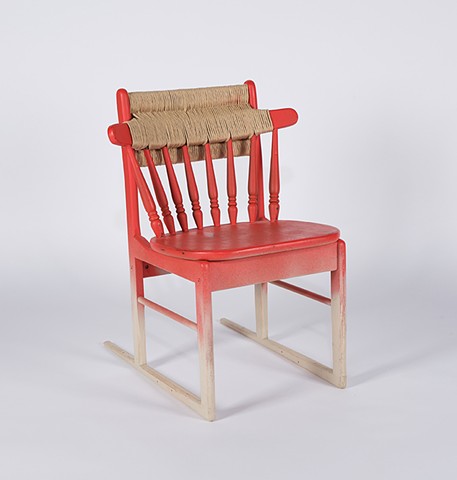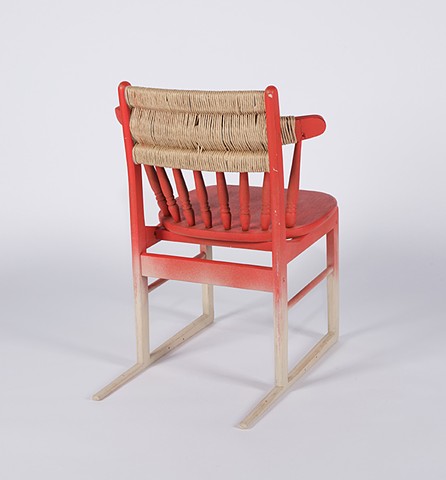Two-wrongs re-make a right
This work was included in the exhibition The world is already full as part of the 2018 Unmaking Waste Conference at the University of South Australia. The existential dilemma for a maker in our times, as the exhibition title proclaims, is that “the world is already full”. Given the current conditions of environmental degradation and ever-expanding waste, how does any conscientious or environmentally ‘woke’ designer/maker justify making yet another thing?
In my own case, it has been necessary to let go of my training that promoted an unlimited blue-sky approach. Having adopted a mindset of “no more blank canvases”, my work begins with manipulation of that which already exists in the world, particularly ‘waste’ furniture. Embracing this media as ‘found object’ and use strategies borrowed from Dada and Adhocism to engage in more environmentally sustainable contemporary art and design practice. Relinquishing of total control actually constitutes a subversive act against traditional notions of mans’ control over nature that advocate the moral superiority of ‘order’ over ‘chaos’. Alternative approaches to design that surrender the privileged position afforded by the blank canvas can provide innovative and collaborative solutions to the problem of a world already too full of stuff. In my experience, this voluntary reduction in agency and authorship offers opportunities for lateral thinking, loosening of control, and greater responsiveness to existing conditions.
Reconsideration of what is ‘waste’ and what is ‘resource’ is required for an alternative approach to practice. ‘Waste’ can be thought of as “matter out of place”. We can choose to re-source ‘waste’ by re-situating it. Timber, for example, has its first life in a tree. From there, it is resourced into a plethora of items, such as wooden objects including furniture, where it finds its second life. Why would the material in these objects—wood— be any less valuable when the object losses its function or purpose? Our cognitive misplacement of the obsolete object taints its material value. However, with alternative approaches to design, we can reimagine the object not as waste, but as resource, and allow the material to take on subsequent lives.
“Two-wrongs re-make a right” is a mash-up of two wooden chairs remade into one denser and more comfortable chair. The original chairs were recovered from the Green Shed recycle centre at Canberra’s tip. Even in the context of the second-hand market, the chairs had lost any perceived value, having become unfashionable and unsellable despite residual functionality. In the context of an affluent, consumer society, they had become ‘wrong’. Utilising ‘waste’ as a material source addresses expanding landfills linked to an overabundance of low-quality consumer goods. Consolidation of two discarded chairs by appropriating traditional seat-weaving techniques results in a single, more ergonomic seating option that is a Franken-furniture, post-modern medley of outmoded styles.

